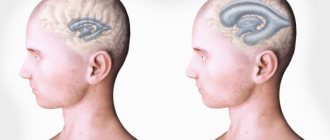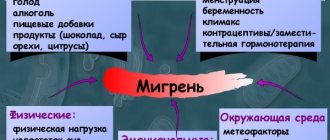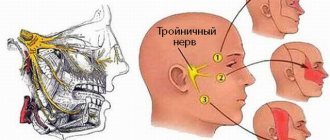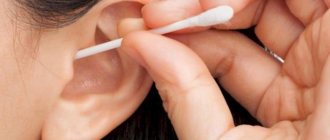Physiological circumstances
A temporary change in sensation on the skin of the nose may occur after exposure to low temperatures.
Each of us has noticed redness, sometimes even paleness of the tip of the nose after returning from severe frost. Poor circulation in this case could also be noticed in the fingers, earlobes or lips. As the tissues warm, blood flow is restored and the condition returns to normal. What should you not do if you have frostbite?
- intensively rub the frostbite area, as thrombosis of small vessels and disruption of the integrity of the skin is possible;
- smoke;
- drink alcohol, because after vasodilation, the body’s heat transfer increases;
- pour hot water over the frostbitten area or warm it over a fire. This increases the risk of burns, since the person does not feel the high temperature in the affected part of the body.
To warm your face, just apply a towel, which is preheated with an iron. It is also recommended to drink warm tea and move to activate blood circulation. Prevention of loss of nasal sensitivity includes:
- applying a rich cream to the skin of the face before going out into the cold;
- shelter from the frosty wind, as the risk of frostbite in the wind increases significantly;
- warming the face with a warm scarf. If you have a long walk outside with a strong wind, you can wrap your face in a scarf, leaving only your eyes uncovered.
If purplish-bluish areas with blisters appear on the skin, you should consult a doctor for treatment of the third stage of frostbite.
If the tip of the nose becomes numb and the cause is frost, then an additional symptom will be paleness or redness of the skin in this area. This condition occurs during prolonged exposure to the cold. In this case, when the person is warm, the blood flow normalizes and the tissues gradually warm up. If purple-bluish spots form on the skin, immediate medical attention is needed.
In addition to frostbite, there are other reasons why the tip of the nose seems to go numb:
- stress and overexertion;
- use of vasodilator drugs;
- sleeping in the wrong position.
Review
Blue skin or lips usually indicate low oxygen levels in the blood or poor circulation.
When there is a lack of oxygen, the blood darkens, causing the skin to take on a blue tint. The scientific name for this phenomenon is cyanosis. In people with dark skin, cyanosis is more noticeable on the lips, gums and around the eyes.
If blueness is observed on the skin of the fingers, tip of the nose, lips, ears, or the nasolabial triangle turns blue - the area between the nose and upper lip and chin, they speak of acrocyanosis - blueness of the parts of the body furthest from the heart. This happens more often when there is a circulatory disorder. If the entire skin acquires a blue tint, we are talking about general (diffuse) cyanosis, which more often happens with a lack of oxygen: suffocation or poor lung function.
In rare cases, the skin may turn blue in a specific area, for example, on one finger. The reason for this change may be thrombosis (blockage) of a blood vessel or its sharp narrowing, which happens, for example, with Raynaud's syndrome.
Cyanosis in adults
- is always a reason to see a doctor. If an adult’s lips quickly become blue, skin cyanosis increases or the nasolabial triangle turns blue, difficulty breathing, chest pain, weakness, general malaise or other alarming symptoms suddenly appear, you should call an ambulance by calling from a landline phone 03, from a mobile phone 112 or 911.
Slowly developing cyanosis usually indicates a chronic heart or lung disease - in this case, you should consult a doctor yourself as soon as possible, and if you feel unwell, call a doctor at home. For example, the gradual turning blue of the fingers or toes, hands and feet also indicates a circulatory disorder, which happens in many chronic diseases of the heart and lungs.
Cyanosis in children
- always speaks of a dangerous condition. In infants, the nasolabial triangle often turns blue. If your child's skin turns blue, you should call an ambulance or go to the emergency department of the nearest hospital yourself. The following symptoms also indicate danger:
- shortness of breath - the child breathes more often than usual, flares his nostrils, tenses his chest muscles with each inhalation or exhalation;
- the child sits bent over;
- groans when breathing;
- the baby is lethargic, detached from others, inactive;
- eat poorly or refuse to eat;
- the child seems irritated.
Source: lib.napopravku.ru
Process characteristics
The tip of the nose goes numb - what does this mean? This condition can be primary or secondary. The first is usually provoked by the following factors:
- hypothermia;
- allergies;
- severe stress;
- injury;
- burn;
- uncomfortable posture when lying down for a long time;
- the appearance of atypical cells on the skin.
If the tip of the nose becomes numb, the reasons described above may be accompanied by symptoms such as pallor or, conversely, severe redness of the skin. Dizziness, headache, and watery eyes may also occur. If the active factor affects the deeper layers of the dermis, for example, due to injuries, rhinitis and other inflammatory processes may develop in the nose. In this case, the mucous membrane swells, and the olfactory functions are impaired.
If the tip of the nose goes numb, and the cause is the secondary nature of the infection, then the condition develops according to the scenario of the symptom complex of the main disease. Thus, neurology will be accompanied by sensory disturbances along the path of nerve endings. And with vascular pathology, hypoxic phenomena will appear in the tissues, their oxygen starvation, which can turn into necrosis.
You may be interested in: Is it possible to smear brilliant green on herpes on the lips?
You may be interested in: How to revive a drunk person: features, methods and recommendations
Possible diseases
Numbness of the nose can be a symptom of serious diseases. Let's consider the most common pathologies that manifest themselves as paresthesia (sensory dysfunction).
Vascular diseases
Impaired local circulation can occur when the diameter of the vessel is reduced by atherosclerotic plaques, as well as due to compression of the vessel from the outside, for example, by a tumor. An aneurysm (local dilation of a vessel with thinning of its wall) is also a serious threat.
Depending on the location of the area with impaired blood flow, a person may be concerned about:
- headache;
- dizziness;
- numbness of parts of the body, face;
- movement disorder;
- changes in speech, auditory, visual function;
- swallowing disorder.
Therapeutic tactics are determined exclusively by the doctor based on the clinical picture and instrumental examination data (computer, magnetic resonance imaging, ultrasound).
Drug treatment may include vascular, neurometabolic, and decongestant drugs. Do not forget about physiotherapeutic procedures that enhance the effect of medications and restore lost functions.
According to indications, surgical intervention may be performed.
The development of osteochondrosis is based on degenerative processes in the intervertebral discs, as a result of which their shape changes and the ability to perform physiological functions is lost. There are several forms of the disease. Paresthesia in the nasal tip is observed when the cervical vertebral zone is affected. Among the causes of the disease it is worth highlighting:
- traumatic injury;
- genetic predisposition;
- heavy weight;
- metabolic disease;
- chronic infectious diseases;
- age-related processes;
- heavy physical labor with stress on the spinal column.
Intervertebral disc degeneration is predisposed by:
- poor nutrition;
- "sedentary work;
- poor posture;
- frequent stress.
The disease manifests itself symptomatically:
- soreness in the back of the head, cervical area. The pain syndrome is characterized by an aching character;
- muscle weakness, which makes it difficult for a person to turn his head;
- neck crunch;
- headache;
- dizziness;
- paresthesia in various parts of the body, face, from which a person may notice that the tip of the nose is numb. The symptom appears as a result of compression of the nerve.
You can often notice a decrease in visual acuity, disruption of the heart and respiratory organs.
With cervical osteochondrosis, a violation of blood flow in the vessels of the brain is often diagnosed.
Untreated osteochondrosis can be complicated by impaired blood flow in the cerebral vessels, due to which:
- migraine occurs;
- blood pressure increases;
- Vascular dystonia develops.
Compression of the spinal cord increases the risk of death. In this case, surgical intervention is required.
Therapeutic tactics for the disease include:
- bed rest;
- medicinal assistance;
- physiotherapeutic procedures;
- dietary nutrition;
- gymnastics;
- folk recipes.
Drug therapy involves prescribing drugs to improve microcirculation, reduce pain, provide nutrition to nerve endings, and slow the progression of degenerative processes. From the table below you can get an idea of the effect of the drugs.
| Group of drugs | Name | Indication |
| Anti-inflammatory | Ibuprofen, Movalis | Reducing the severity of inflammation and pain |
| Antispasmodics | No-shpa, Sirdalud | Eliminate spasms, reduce pain |
| Antioxidant | Vitamins of group B (Milgamma), C, Mexidol | Protects nerve fibers |
| Vascular, antiplatelet agents | Actovegin, Trental | Improve microcirculation |
| Chondroprotectors | Teraflex, Chondroxide | Normalize metabolic processes, accelerate tissue regeneration |
Ointments and gels are prescribed for local use. They improve local blood flow, reduce pain and relax muscles. The drugs consist of herbal or synthetic components. So, you can use Apizartron, Finalgon, Fastum.
Physiotherapy exercises, when carried out regularly, lead to good results. Exercises can improve blood flow, strengthen back muscles, and increase their elasticity. Physiotherapeutic procedures include electrophoresis, mud therapy, massage, darsonvalization, as well as reflex and manual therapy.
Why does my nose go numb? Often, sensitivity disorder in the nose is observed when the trigeminal nerve is damaged. Predisposing factors include:
- nerve compression (osteochondrosis, tumor, trauma, adhesions, congenital anomalies);
- infections;
- diseases of the nervous system (multiple sclerosis, cerebral palsy, meningitis, epilepsy);
- improper dental treatment, gumboil, maxillofacial surgery;
- hypothermia;
- metabolic disease.
Clinically the disease manifests itself:
- pain in the facial area;
- paresthesias;
- changes in facial expressions;
- facial distortion;
- muscle twitching;
- lacrimation.
Treatment of the disease includes:
- eliminating the cause of nerve damage;
- reduction of nervous excitability;
- drug restoration of nerve structure;
- physiotherapeutic procedures.
The following medications are prescribed:
- anticonvulsants (Carbamazepine);
- muscle relaxants (Mydocalm);
- B vitamins (Neurorubin);
- unsaturated fatty acids (Omega-3);
- antihistamines (Suprastin, Diazolin);
- sedatives (Glycine).
Physiotherapeutic procedures are necessary to relieve pain and restore the nerve. Therapy is carried out in courses of ultraviolet irradiation, electrophoresis, UHF, laser, diadynamic currents, massage and acupuncture.
As we can see, impaired sensitivity of some parts of the face can be a fairly serious symptom of the disease. To prevent complications, you need to contact a neurologist for diagnosis. If numbness was noted once after hypothermia, there is no need to be afraid.
Galaktionova Svetlana
Sometimes, just by looking at a person, doctors are able to suspect that he has some kind of ailment and even make a preliminary diagnosis. Thus, the area of the nasolabial triangle, an area bounded by the mouth and the nose itself, and on the sides by the nasolabial folds, can provide quite a lot of information about health.
We invite you to familiarize yourself with Cedar oil in cosmetology: the use of essential oil for the face in cosmetology, benefits and reviews
Vitamins
Since numbness of the lips can be associated with a deficiency of vitamins B and D, it is very important to replenish it regularly. For this purpose, special vitamin complexes, foods rich in these substances and medications are used. Vitamins are selected by the attending physician, focusing on diagnostic results, especially blood tests.
Let's consider Neurovitan - a balanced complex of B vitamins, the effect of which is due to its rich composition:
- B1 – is responsible for the energy metabolism of nerve fibers in a living organism and is necessary for the normal functioning of the nervous system.
- Octothiamine is a combination of thioctic acid and vitamin B1. It is characterized by prolonged action and high acid resistance.
- Vitamin B2 - riboflavin is one of the main participants in protein, carbohydrate and fat metabolism, which is necessary for the synthesis of hemoglobin.
- Vitamin B6 – takes part in the synthesis of neurotransmitters and protein metabolism, improves the functioning of nerve fibers and liver function.
- Vitamin B12 - cyanocobalamin is involved in blood formation, the synthesis of myelin and nucleotides, and the development of epithelial cells.
Neurovitan is used in the treatment of neuritis, lesions of the nervous system, paresthesias of various localizations and etiologies, peripheral paralysis, neuralgia of various origins, lumbago. Effective for diseases of the cardiovascular system, immunodeficiency states, radiation sickness, anemia, dermatitis. Can be used on a regular basis by people leading an active lifestyle, with an unbalanced diet, smoking or alcohol abuse.
Adult patients are prescribed 1-4 tablets per day for 2-4 weeks, for children and pregnant women 1-3 tablets per day. The medicine may cause allergic reactions in the form of dermatitis. Contraindicated for use if you are intolerant to its components.
White nasolabial triangle
Quite often the skin on the face looks different in color. And if the area of the nasolabial triangle noticeably stands out on the face, becoming pale or blue, this is a serious reason to take a closer look at your health. So, such a pathology may indicate:
- For various disturbances in the activity of the heart. In particular, in many children, pallor or blueness of the nasolabial triangle becomes the first manifestation of congenital heart disease (of course, we are not talking about serious illnesses that can be easily diagnosed soon after birth). A white nasolabial triangle in an adult may be a sign of heart failure.
- For insufficiently good functioning of blood vessels, for example, for the presence of spasms, atherosclerosis, disorders of elasticity, strength, etc.
- On the active development of certain diseases associated with the functioning of the respiratory system. Doctors note that the nasolabial triangle often turns pale or blue with bronchitis, pneumonia, severe inflammation of the adenoids, bronchial asthma and respiratory failure.
- The development of anemia, in which the volume of hemoglobin in the body decreases and the cells receive less oxygen.
Sometimes the appearance of a white circle or triangle around the mouth is associated with a local disturbance of blood flow in small subcutaneous vessels. This situation can be completely normal if a person goes outside into the cold or is very worried.
Infection in the Triangle of Death kills the brain
The nasolabial region is characterized by specific venous vascularization: the blood vessels passing here connect to the brain. Facial veins do not have valves, which allows the infection to spread more quickly.
Although situations where infection leads to a threat to health and life are rare, it is worth knowing this feature of the body and avoiding any intervention in the nasolabial area.
Complications arising from infection in the area of the nasolabial triangle lead to cavernous sinusitis. Inflammations often appear after infection with staphylococcus or other bacteria, which, after an injury or after squeezing out pimples, penetrate the damaged tissue.
A developing infection, which will not be so dangerous in other places, in this case leads to serious illnesses - meningitis and brain abscess. Therefore, if you have skin problems, you need to treat the infection, but under no circumstances try to get rid of acne by squeezing.
Thrombophlebitis of the facial veins and cavernous sinus thrombosis are serious complications that are now rare thanks to antibiotics. Sinus thrombosis is especially dangerous. People who develop the pathology complain of fever, chills, headache, vomiting, nausea and impaired consciousness. At a later stage of the disease, vision problems occur as a result of cranial nerve palsy.
Patients experience:
- visual impairment;
- photophobia,
- mydriasis;
- swelling around the eyes
- facial hyperalgesia.
Thrombotic sinusitis is treated with antibiotics, anticoagulants, or glucocorticosteroids. In some cases, surgical cleaning of the cavernous sinus may be necessary.
Trigeminal neuralgia
Another reason why the tip of the nose becomes numb may be trigeminal neuralgia. This pathology is quite rare. It is characterized by inflammation of the nerve endings that provide sensitivity to the facial muscles.
- Infectious diseases.
- Nerve compression.
- Nervous system disorders.
- Hypothermia.
- Incorrect dental treatment, gumboil, jaw surgery.
- Metabolic disease.
- Tingling and numbness in the nose.
- The appearance of pain in the facial area.
- Change of facial expressions.
- Muscle twitching.
- Facial distortion.
- Severe lacrimation.
- Infectious diseases.
- Nerve compression.
- Nervous system disorders.
- Hypothermia.
- Incorrect dental treatment, gumboil, jaw surgery.
- Metabolic disease.
- Tingling and numbness in the nose.
- The appearance of pain in the facial area.
- Change of facial expressions.
- Muscle twitching.
- Facial distortion.
- Severe lacrimation.
Another quite serious and no less common cause of numbness in the tip of the nose is trigeminal neuritis, or more precisely, an inflammatory process in the nerve endings. Not everyone knows that the trigeminal nerve provides sensitivity to the facial muscles in humans. If, as a result of a pathological process, inflammation of not the entire nerve, but only one part of it, is observed, then this will manifest itself in numbness of the nasolabial triangle, that is, the entire nose.
In parallel with the inflammatory process of trigeminal neuritis, the patient may experience severe migraine and vegetative-vascular dystonia. The reason for these phenomena is physical and mental exhaustion, as well as prolonged exposure to stress on the human body. To prescribe treatment, be sure to consult a general practitioner and after his consultation, you can take any measures.
So, the causes of nasal numbness can be:
Red nasolabial triangle
Sometimes the color of the skin in the area of the nasolabial triangle changes to the red side, which can also be a rather serious symptom and indicate:
- Development of various allergic reactions. Unexpected symptoms of individual intolerance may appear when the skin is directly affected by allergens (cosmetics, drugs, herbs, etc.), as well as with systemic allergies (to wool, food, medications, etc.). Hyperemia in this case is often accompanied by unpleasant itching and flaking; reddish skin may become covered with rashes. It is also possible to experience an allergic runny nose, watery eyes, sneezing, etc.
- Perioral dermatitis. In principle, this condition is a type of allergic reaction, but it is typically precisely located in the area of the nasolabial triangle (and near the mouth, in particular). With the development of perioral dermatitis, the skin first turns red, irritation occurs on it, and then it is covered with a small and frequent pustular rash. Most often, this problem occurs in adults - young girls and mature women. Some doctors suggest that the occurrence of perioral dermatitis may be associated with certain components of cosmetic products. A new toothpaste can also contribute to its appearance.
- Demodecosis. This disease occurs due to the aggression of a microscopic parasite – the Demodex mite. It can live quietly on the skin for many years, but under the influence of provoking factors (decreased immunity, hormonal fluctuations, etc.) it begins to actively multiply and provokes inflammation, acne and other problems. Most often, demodicosis begins with redness of the nose and nasolabial triangle, after which it progresses and spreads to the cheeks.
- Other dermatological diseases. In particular, the skin in the area of the nasolabial triangle may turn red and become covered with rashes due to streptoderma (in this case, a weeping rash or crater spots are visible to the naked eye), fungal diseases, etc.
As a rule, the nasolabial triangle in children turns red in response to various allergic reactions. Subsequently, the redness may be accompanied by a rash and peeling.
More about the main pathological prerequisites
As for the pathological problems that lead to the appearance of the symptom in question, most often light discharge occurs due to viral infections, lack of vitamins and microelements, and disturbances in the gastrointestinal tract. Let's take a closer look at the most common reasons for the formation of white plaque on the lips.
This type of disease begins to develop against the background of excessive proliferation of opportunistic yeast-like fungi of the genus Candida, which live in every organism. People call this disease “thrush”. Patients with candidiasis often complain of the following symptoms:
- redness of the mucous membrane inside the mouth,
- a cheesy, white coating on the tongue and lips, as well as on the roof of the mouth,
- the appearance of blisters, painful ulcers that cause discomfort during eating and talking,
- sensation of itching and burning at the location of the wounds,
- fatigue, lack of appetite,
- In a newborn baby, plaque often causes an increase in body temperature.
The photo shows candidiasis.
The disease occurs against the background of such negative factors as chronic problems with the gastrointestinal tract, metabolic disorders, diabetes, stress, depression, antibiotic therapy, pathologies of the endocrine system and a sharp decline in immune defense. It is also transmitted to healthy people through kisses, personal hygiene and household items.
Thrush often occurs in women in the first trimester of pregnancy. This symptom disappears on its own, but it is still better for the patient “in pregnancy” to consult a doctor. Candidiasis is also diagnosed during hormonal imbalances, menopause, and during puberty. In a child, sometimes spots are the result of trauma to the mucous membranes and the subsequent formation of pathogenic microflora (if he hits himself or bites his lips).
We invite you to read: Why does my mouth have a salty taste? A few simple steps will help!
If left untreated, the film acquires a brownish or greenish tint.
For candidiasis, specialists prescribe treatment, which includes a comprehensive intake of antifungal agents, application of creams and ointments. During the entire course, patients are advised to rinse their mouths with appropriate solutions.
An imbalance of bacteria (or dysbiosis) in the human body, provoked by taking medications and poor-quality food, often causes the accumulation of deposits on the tongue, similar to cheesy lumps. Plaque is not always easy to clean off from the outer part of the mucous membranes and in some cases has a foamy consistency, which indicates the presence of fungal flora. Characteristics of plaque in dysbacteriosis:
- the thickness of the film does not allow you to see the color of the tongue,
- wet and greasy consistency
- white color (a yellowish tint indicates a more severe form of dysbiosis),
- It can be removed easily, but quickly appears again.
In case of dysbacteriosis, plaque is easily removed, but also quickly reappears.
After carrying out the necessary diagnostic examinations confirming the disease, it is necessary to clean the tongue with special oils and solutions, and also restore the intestinal microflora.
This disease occurs as a result of prolonged malnutrition with a lack of any types of vitamins. The lack of these organic compounds causes a malfunction of the entire body and significantly affects the condition of the epithelium. Dry skin from dehydration cracks, a rash appears on it, and then a plaque forms.
Additional symptoms of vitamin deficiency are dulling and falling hair, thin and peeling nail plates, involuntary and painful muscle contractions, bleeding gums, tooth sensitivity, joint pain, decreased visual acuity, weight and slow development of bone mass in the baby.
With autotaminosis, lips become dehydrated, dry and dull.
Depending on the severity of the disease, the doctor prescribes the patient a course of physiotherapeutic procedures, intramuscular injections or oral medication. If all recommendations are followed, clots on the lips of the mouth will disappear very quickly.
Inflammation of the mucous membranes of the mouth, called stomatitis, is characterized by unpleasant, painful sensations when eating or drinking, the appearance of small vesicular blastulas, a light white film and elevated body temperature. In the absence of proper treatment, the patient may develop round purulent ulcers with smooth outlines, the process of salivation will also increase, and the lymph nodes located near the jaw will increase. For the same reason, clots often form inside the lip.
The photo shows stomatitis on the oral mucosa
The infection spreads through contact, therefore, as soon as plaque appears in adults or children, you need to use separate utensils, and place the patient’s toothbrush away from the personal hygiene items of healthy people. This pathological condition is treated under the supervision of a doctor, since the treatment regimen consists of antiviral, painkillers and antibacterial agents.
The disease called diabetes is caused by a malfunction of the pancreas, which is responsible for the production of insulin. Without this hormone, sugar that is not converted into glucose accumulates in the blood, disrupts water metabolism, and fluid is excreted without remaining in the tissues. Therefore, people with diabetes complain of thirst, their skin dries out and peels, and the wounds on it take a long time to heal. Sometimes there is itching and films in the folds surrounding the mouth.
With diabetes, lips crack and do not heal for a long time.
Problem areas that appear in the corners of the lips often signal the beginning of an inflammatory process in the mouth. It develops independently or is a symptom of another disease. Basically, cheilitis can be triggered by dermatosis that accompanies skin pathologies, allergies, or intensive growth of fungal bacteria provoked by taking antibiotics.
With cheilitis, problem areas appear in the corners of the lips
Cheilitis is characterized by dry cracks in the corners of the mouth, followed by the appearance of films on the upper and lower lips. Treatment consists of taking anti-inflammatory, antifungal ointments, antihistamines in combination with hormonal ones.
One of the very first manifestations of the disease is burning, tingling on the lips and the formation of papules. Over time, the liquid in the transparent blisters becomes cloudy, they burst, turning into a weeping wound, and the damaged epithelium becomes covered with a film. Herpes causes discomfort in people, provokes the growth of lymph nodes and an increase in body temperature.
The photo shows herpes on the lips
Treatment should begin immediately - as soon as bubbles appear. Antiviral and immunomodulatory agents are prescribed as therapy.
Colds and headaches
Numbness can also occur when colds begin to develop. Loss of sensitivity disappears on its own after some time, but coughing, sneezing and runny nose appear.
Another reason for loss of sensitivity may be migraine. If the pain becomes numb and a sharp throbbing pain appears, then you can only get rid of the symptoms by taking medications.
In some cases, the tip of the nose becomes numb at the very beginning of a cold or flu. The change in sensitivity occurs quickly, independently and does not pose any danger.
In addition to the common cold, migraines can cause numbness. If acute pain appears in the area of the bridge of the nose, then it will not be possible to get rid of such a symptom without medication.
White lips in adults and children: diagnosis and treatment
In cases where anamnesis and visual examination of the affected areas of the lips are not enough to make an accurate diagnosis, laboratory and instrumental studies are prescribed. Usually this:
- clinical blood and urine analysis;
- blood chemistry;
- microscopy of lip plaque, histological examination of the selected material;
- Ultrasound, CT, MRI - if necessary, assess the condition of internal organs.
After the diagnosis is made, measures are taken to eliminate the causes of the disease. For some, the doctor will recommend getting rid of bad habits, preventing the adverse effects of the environment, and reviewing their diet in order to saturate it with vitamins and microelements. Others will need drug therapy with systemic and local medications.
What does the formation of a whitish film mean? You can conduct preliminary diagnostics and identify the suspected cause of the problem by its location and main characteristics:
- cheilitis, herpes - clots form on the outside of the lips,
- candidiasis - accumulation on the inside of the lips in the form of a cheesy layer,
- problems of the gastrointestinal tract - clots look like a sticky film,
- vitamin deficiency, alcohol and nicotine addiction - a whitish coating collects in the corners of the mouth.
We invite you to familiarize yourself with the milk ones falling out but the indigenous ones not growing, why?
Accumulations under the lip also occur with fungal infections of the mucous membrane. If they cover the palate, tonsils, the inside of the cheeks and the tongue, then this is a severe form of infection. In men, this type of formation is most often the result of smoking.
Cold allergy
Have you noticed that when you go out into the cold in sub-zero weather, after a while you stop feeling your arms, legs and even your face? Some people are allergic to cold even with a slight drop in temperature. To avoid this phenomenon, it is necessary to apply a protective cream to your face when going outside, and also insulate it with scarves.
Numbness of the head and face in most cases is manifested by such unpleasant symptoms as: tingling, tingling of certain parts and areas of the face, “goosebumps” on the skin, as well as a decrease or complete loss of sensitivity.
It happens that the face and nose, including those, go numb under the influence of low temperatures. It appears mainly in cold autumn and winter. To eliminate this phenomenon, simply insulate your face.
Also common causes of facial paresthesia on the right or left are vascular instability with sudden changes in pressure due to stressful situations and fatigue, combined with headaches (with migraines and vegetative-vascular dystonia) or a feeling of detachment and emotional instability (with depression and neuroses).
There are a huge number of reasons why the nose goes numb - from the common cold to such dangerous diseases as stroke and multiple sclerosis, however, if you feel numbness in the nose, you should not panic and go to extremes. Perhaps the reason was simply an uncomfortable position of the face or the person was simply blown away.
Folk remedies if part of the head goes numb
For some paresthesias, folk remedies help.
- Warm compress with salt. The compress is prepared as follows: pour a few tablespoons of salt into a container with hot water so that the solution is highly concentrated; allow to cool to a tolerable temperature; soak a piece of cotton cloth in this solution and apply it to the numb area for 5 minutes. Can be repeated 3 – 4 times. Salt and heat help relax muscles and relieve spasms.
- Taking relaxing or contrast baths. The effect of relaxing baths is the same as that of a compress. You need to lower the part of the body where the feeling of numbness arose into a container of warm water. In contrast baths, conditions for temperature differences are created. Alternately use hot and cold water. The action causes the blood vessels to alternately dilate and contract, providing additional blood flow to the affected area.
- Herbal decoction. They prepare it like this - make a mixture of parsley fruits, goldenrod herb, viburnum bark, nettle leaves, medicinal clover, tricolor violet (2 tablespoons each). Part of this mixture (2 tablespoons) is placed in half a liter of boiled water; boil for several minutes; allow to cool; filter, pour into another container for storage. Drink half a glass of the decoction 2 times a day after meals. For people with herbal allergies, it is better to replace this treatment with an alternative one.
- Acupuncture. A popular method of alternative medicine in the treatment of muscle tension. Acupuncture acts on active points, restoring the movement of energy through the energy channels of the body. Acupuncture successfully treats radiculitis, headaches, vegetative-vascular dystonia, and chronic fatigue syndrome.
- Light massage. The massage is performed without effort or pressure. It can be combined with other types of treatment. With skin and muscle stimulation, blood flow increases and muscles in the affected area relax.
↑
Which doctor should I contact?
If numbness occurs without external factors influencing it, you need to make an appointment with your local physician. He will collect anamnesis, conduct a survey, examine and based on all this he will draw his conclusions.
We suggest you familiarize yourself with the name of the facial cleansing device
If the doctor suspects any disease of the internal organs, he sends the patient to specialists who treat the corresponding pathologies. If you have problems with blood vessels, you should visit a cardiologist. He will do an ultrasound of the heart and conduct a full examination, which will allow him to establish a diagnosis.
If you suspect neuralgia or problems with the spine, you will need the help of a neurologist. If problems arise in making a diagnosis, a CT or MRI scan of the desired area of the body is prescribed.
Cyanosis in children
So, in most cases, the disease occurs in infants. Natural cyanosis in a newborn baby can occur with strong crying; it is pulmonary in nature. During screaming, breathing is disrupted and the supply of oxygen to the blood decreases. This symptom disappears on its own as the baby grows older.
Mandatory medical intervention
If by the age of one year cyanosis is still observed, this is a serious reason to consult a doctor. This symptom may indicate heart disease and acute heart failure. Even if the local pediatrician assures that there is no reason to panic, you should consult a pediatric neurologist, cardiologist and have an ultrasound of the heart.
Blueness around the mouth in adults
In the adult population, this pathology is observed less frequently, and is almost always accompanied by accompanying symptoms: blue discoloration of other areas of the skin and mucous membranes. Manifestations of a single nature may be associated with oxygen starvation that occurs during prolonged stay under water or at altitude, as well as with severe allergic reactions in which spasm of smooth muscles occurs.
Alarm signal
If the nasolabial triangle turns blue regularly or constantly, then you should think about the presence of serious diseases. Such as tumors of various types, disturbances in the functioning of the heart, blood vessels or respiratory system, poor circulation. Since the blue skin around the mouth
is a symptom rather than a disease, diagnosis and treatment are best left to specialists. The causes and consequences can be very different; it is impossible to establish and prevent them on your own.
Source: skindislab.com
All articles about vascular disease and treatment:
Numbness of the nose and head - symptoms
If the tip of the nose becomes numb and a headache appears, there may be several reasons. Most often this occurs due to circulatory problems in the cervical spine or brain. But in order to find out exactly where the blockage of blood vessels occurred, it is necessary to undergo a full examination using computer diagnostics.
Osteochondrosis can also cause loss of sensitivity. This symptom occurs when calcium salts compress nerves and blood vessels.
osteochondrosis
Osteochondrosis and poor circulation are the main causes of numbness. A fairly serious, but not common cause may be trigeminal neuritis. Numbness is caused in this case by the inflammatory process in the nerve endings. The trigeminal nerve in humans provides muscle sensitivity, and in the presence of inflammation of part or all of the nerve, loss of sensitivity occurs not only in the tip of the nose, but also in the entire nasolabial triangle.
Vegeto-vascular dystonia and migraine most often appear against the background of inflammation of the trigeminal nerve. This condition most often occurs due to prolonged stress, physical or mental exhaustion of the body. But in any case, you need to consult a doctor for advice and treatment.
Vegetative – vascular dystonia
It is necessary to urgently consult a doctor if the tip of the nose and the back of the head become numb. The sensation occurs suddenly and does not go away for a long time. These symptoms indicate a possible stroke. You should not ignore such a signal from the body, as a stroke can be fatal.
The nose may become numb after a person has slept in an uncomfortable position, such as with their face in a pillow. This sensation lasts only a few minutes, passes quickly enough and does not cause discomfort. When you sleep in an awkward position, blood flow is disrupted. After a person stands up or changes position, blood circulation is restored and the numbness goes away.
An unpleasant sensation of loss of sensitivity can be caused by taking certain medications. Patients in neurological departments quite often complain of a slight tingling sensation that starts from the tip of the nose. This sensation may occur periodically during treatment and cause discomfort. Numbness appears during the action of vasodilator drugs and will cease to bother you over time.
Numbness can also be caused by overexertion. In this case, the person begins to feel a headache. Stressful situations at work, in the family and constant fatigue can trigger a drop in blood pressure. This causes headaches and numbness of the nose and bridge of the nose. In this case, it is necessary to normalize the psychological state.
A fairly common cause of discomfort can be cold air. In the winter season, a person may not feel his arms or legs after a short stay in the cold. There are also cases when loss of sensitivity in the limbs occurs with minor changes in air temperature.
If this sensation does not go away for a long time, then it needs to be rubbed in order to stimulate blood circulation. It is best to rub with a woolen glove or mitten. But if this method does not help, then you should consult a doctor.
With osteochondrosis, numbness of the nose occurs due to compression of the vessels of the neck and nerves by deposited salts, as blood to the face passes through the vertebral arteries. The cause of nasal numbness may be inflammation of the trigeminal nerve, which provides sensitivity to the facial muscles. However, as a rule, it is not the entire nerve that becomes inflamed, but only its lower part, which is expressed in numbness of the nasolabial triangle in general and the nose in particular.
It happens that the face and nose, including those, go numb under the influence of low temperatures. Therefore, after the first attacks of numbness in the facial area, it is necessary to analyze the situation so that it does not happen again next time. A common cause of paresthesia and facial numbness is osteochondrosis of the cervical spine. The symptom of numbness in this case is due to constant compression of the spinal nerves and blood vessels by deposited salts.
Therefore, if repeated or prolonged attacks of facial numbness occur, consultation with a specialist and a full examination are necessary. The causes of numbness on the right or left side of the face are inflammation of the trigeminal nerve, neurosis, migraine attack or depression.
Often a person is faced with such an incomprehensible, alarming and even frightening phenomenon as numbness of the nose. It can be expressed in various forms: tingling of the tip of the nose, loss of sensitivity and a feeling of pins and needles. Sometimes this occurs in a relatively mild form, and sometimes in a very strong form that causes noticeable discomfort.
If there are interruptions in the blood flow, you can find out the true picture only by undergoing a full examination, since there can be a lot of reasons for this condition - starting from blockage of a capillary with a cholesterol plaque and ending with an aneurysm. In all other cases, it is recommended to visit a doctor to determine the exact cause.
Short-term and sudden episodes of numbness of a part of the face (lips, cheeks, forehead, half of the face) can occur during prolonged sitting in one position (knitting, computer, reading), with an uncomfortable position of the head during sleep, with colds due to muscle inflammation , during an attack of fear, during cooling as a result of vasospasm.
But there are also more serious causes of this symptom, which are a consequence of the development of vascular or neurological diseases. It is important to remember that frequent and prolonged attacks of numbness of the face, half or some part (lips, nose, forehead, cheeks, chin) are a sign of the disease and determining the cause of this pathological process, promptly seeking advice from a specialist, examination and adequate treatment - the key to a speedy recovery.
In this case, numbness of the face is accompanied by chronic pain in the cervical spine, headaches, mild dizziness, malaise, as well as a crunch in the neck when turning the head. Also, the cause of numbness of half the face or part of it is considered to be transient disturbances in the blood supply to the brain or face.
Trigeminal neuralgia occurs when it is irritated or compressed as a result of inflammatory processes in the sinuses, mouth, ear, hypothermia of the face, compression by tumors or adhesions after injury. Numbness of a part of the face occurs as a result of the head being in one position for a long time; when working at the computer for a long time, reading, or doing handicrafts, it is necessary to change the position of the head and body, taking short breaks.
In most cases, the causes of this condition are circulatory disorders or pathological changes in the nerves. Today, common causes of strokes in young women are considered to be a combination of long-term use of hormonal contraceptives, smoking and poor diet, as well as frequent migraine attacks against the background of the above factors.
It is not often that we notice a loss of sensitivity at the tip of the nose. To detect the affected area, just touch it or move the part. Numbness of the nose is manifested by a lack of sensation when palpating it. The causes of nasal numbness may be physiological or indicate the development of a disease.
Among the common causes, it is worth highlighting disturbances in vascular blood flow, changes in blood pressure, as well as psycho-emotional instability.
We suggest that you familiarize yourself with Antibiotic treatment of human diseases caused by microorganisms
If you become very numb and at the same time sensitivity in other parts of the face and body is lost, you should call an ambulance. The cause of the deterioration may be a stroke.
The causes of nasal numbness are varied. This condition can be observed with colds, myocardial infarction, acute cerebrovascular accident, and multiple sclerosis.
A common reason why a sensitivity disorder of the nasal skin may develop is trigeminal neuralgia, in which numbness of the nasolabial triangle is noted. Facial numbness may occur in patients who suffer from migraines.
Risk factors include:
- genetic predisposition;
- infectious processes;
- metabolic disorders;
- age-related changes;
- excessive physical and mental stress;
- passive lifestyle;
- frequent stressful situations;
- poor nutrition;
- overweight;
- injuries;
- poor posture.
Impaired nasal sensitivity may mean that a person has an allergy to cold, which manifests itself not only when going outside in the cool season, but also when eating cold food or using cold water for washing.
What to do if your cheek is numb
To get rid of this unpleasant phenomenon, you need to know what causes it. There are many reasons for cheek numbness; only a specialist can figure them out. Therefore, it is better not to self-medicate, but to seek medical advice. Since in most cases the causes of numbness are related to the nervous system, you should first be examined by a neurologist. You may need to examine the cervical spine and do a CT scan of the brain. And based on the examination results, the doctor will help you get rid of this unpleasant phenomenon.
The older a person gets, the more the skin loses its tone. Full and firm cheeks
may become sunken or sagging. In this case, the cause is excessive thinness, which is caused by poor nutrition, as well as low-calorie diets. You can restore your cheeks to their healthy, rounded shape with the help of modern cosmetology and surgery.
Instructions
Make cheeks
it can be thicker using lipolifting, implantation and reinforcing the skin with special threads. These are the main means of aesthetic surgery, which can increase not only the volume of the cheeks, but also the cheekbones.
Lipolifting is a transplantation of one's own adipose tissue. It is carried out using special microinjections that are introduced into the cheek
. In this case, the tissue for injection is taken only from areas of excess fat deposition (abdomen, buttocks) and then processed. The advantage of lipolifting over other procedures is the body’s good acceptance of its own adipose tissue. Therefore, it does not cause allergic reactions or rejection by the body. After the lipolifting procedure, there will be no scars left on your face, and your body will return to normal within 3-4 days.
Implantation will help you correct the shape of your cheeks or cheekbones and give them the necessary volume. In this case, the implant is made of solid silicone. To insert it, an incision is made in the cheek
, on the inside or under the lower eyelid. The implant is then attached to the bone or soft tissue. The risk of this operation is associated with possible displacement of the implant, infection, and rejection. Your cheeks will swell at first. The recovery period will last more than a month.
Numbness in one of the cheeks is not a very common problem. However, it requires attention and consultation with a doctor, as it can mean serious health problems, which will be discussed below. For what reasons does numbness of the cheek occur, how to deal with it - these questions will be discussed in the article.
Treatment of hypothermia
When the tip of the nose becomes numb, the choice of treatment method depends on the causes of this condition. If this is hypothermia, then to eliminate the discomfort you should warm this area of the skin. The use of heating pads, hot objects and other aggressive methods is prohibited.
It is recommended to apply a towel soaked in cool water to your nose. When the nose gets used to this temperature, it is increased and the wet towel is again brought to the desired place. Gradually, the numb surface will warm up, blood circulation will improve, and the blood vessels will dilate.
After this, the discomfort will disappear and sensitivity will return. You can do all this yourself at home. But if there are symptoms of severe frostbite, this method is not used. In this case, professional medical assistance is necessary.
What symptoms should cause alarm?
A small amount of whitish clots is often a consequence of the vital activity of organisms living in the mouth. If the formation of a film is not accompanied by discomfort or pain, and the film itself is easily cleaned off, then you don’t need to panic. But plaque should cause alarm if the following accompanying symptoms occur:
- unpleasant, putrid odor from the mouth,
- decreased functionality and mobility of the tongue,
- change in consistency and shade of plaque,
- restless sleep,
- loss of appetite,
- painful sensations in the throat, abdominal part.
An unpleasant accompanying symptom of the problem may be bad breath.
The listed signs can signal serious pathologies and require an immediate visit to the doctor. Based on the test results, he will identify the causes and determine treatment tactics.
Doctors' opinions
Experts believe that a nose that has lost sensitivity does not pose a health hazard. Most often, this symptom is associated with physiological reasons: hypothermia, uncomfortable posture during sleep, allergies.
But if this condition appears frequently and for no apparent reason, doctors recommend going to the hospital. After all, it is impossible to independently determine why the tip of the nose goes numb. Usually, with proper treatment, the pathology can be successfully treated.
How does this symptom manifest itself?
It is worth noting that numbness of the head is not an independent disease, but a symptom.
It can occur in completely different diseases. Hypoesthesia (another name for the symptom) may also be accompanied by various symptoms. The patient often complains of feeling dizzy and numb at the same time. The reasons lie in many diseases. Sometimes one part goes numb. Usually, if hypoesthesia appears suddenly and also goes away abruptly, doctors recommend consulting a neurologist. It is also important to quickly contact a specialist if, along with numbness, it is difficult for the patient to talk or move, or if uncontrolled urination occurs. As a rule, such serious symptoms indicate the presence of complex diseases in the human body, and the sooner treatment is started, the higher the patient’s chance of full recovery.
Osteochondrosis and blood flow disorders
If you feel that your nose is numb and at the same time you have a severe headache, then there may be several true reasons for this condition. The first and most common is a violation of blood flow in the body, or more precisely in the following parts, such as the face, brain, and also the cervical spine.
In some of these areas, blood flow is disrupted, which leads to numbness in the nose. In order to find out the true cause of the pathology, the patient will need to undergo a full medical examination. This is necessary because visually no doctor will be able to tell you where exactly the disruption of the blood vessels occurred.
Most likely, there is a blockage of capillaries in the area of the brain or spinal cord, but only with the help of computer diagnostics or magnetic resonance imaging will it be possible to determine the direction of treatment.
If the cause is blockage of blood vessels and capillaries with cholesterol plaque, then the patient will be referred to specialists such as a vascular surgeon and a cardiologist. If the cause of numbness in the nose is osteochondrosis of the cervical spine, then it is necessary to free the nerves and blood vessels from compression by calcium salts. Doing this, as you understand, at home will not work.
So, the first two reasons for numbness of the tip of the nose are poor circulation and osteochondrosis of the cervical spine.
Consequences if you do nothing
If the scalp is numb once and for a short time, then there is no need to worry too much. This happens when the head and neck are in an unnatural position: while sleeping (uncomfortable mattress or pillow), sitting for a long time at the computer (improper placement of the screen in front of the face) or performing repair work (whitewashing the ceiling, fixing a chandelier).
There is numbness that goes away when the head returns to its previous position. But you should not overuse and repeat actions that lead to, albeit temporary, paresthesia. Oxygen starvation of the brain is dangerous due to loss of consciousness.
Paresthesia of the face or other part of the head is temporary and transient. Paresthesia occurs as a result of injury, medication, or disease. It disappears with recovery or cessation of drug exposure.
If numbness of the head does not go away for a long time (chronic course) or appears regularly, but at temporary intervals (paroxysmal nature), then delaying a trip to the doctor will only worsen the situation, up to irreversible processes, when the doctor will no longer be able to help.
Numbness may be one of the symptoms of another disease. It is better to get an appointment with a doctor on time.
Neurological cause of the disease
The nose may become numb due to disturbances in its sensitive innervation. This function is assigned to the cutaneous branches of the fifth pair of cranial nerves. In their structure, an important role is assigned to the external nasal branch, which arises from the anterior ethmoidal nerve. The area of responsibility of this branch is the innervation of the dermis on the dorsum of the nose and its tip. That is why, when this branch is damaged during rhinoplasty, numbness of the nose occurs, including at its tip.
The skin of the face is also innervated by the trigeminal nerve. The sensitivity of the tip of the nose is a property for which its first and second branches are responsible. Motor activity is assigned to the facial nerve.
If the nose becomes numb due to a neurological nature, then the following symptoms will develop in parallel:
- shooting pains, sometimes so burning and sharp that they become impossible to bear;
- lacrimation;
- hyperemia;
- mucous discharge from the noma;
- increased salivation;
- rhinorrhea.
Certain groups of facial muscles may twitch periodically, resembling a tic.
The masticatory muscles can enter a state of convulsive contractions, frightening others with the facial expressions.
What are the causes of functional disorders
Functional disorders of the innervation and blood supply to the tip of the nose can occur for the following reasons:
- facial injuries with disruption of neurovascular integrity;
- infection through damaged skin (tuberculosis, herpes virus, poliovirus, gonorrhea and others);
- infringement of the processes of the involved cranial nerves by neoplasms in the skull or formed hematomas;
- poisoning of the body with toxic toxic substances;
- exposure to elevated levels of radiation fields;
- anatomical pathologies in the structure of the nose;
- intracranial pressure disorders;
- defective outflow of decay products of damaged tissues due to venous stagnation;
- poisoning with intense-spectrum drugs;
- severe allergic reactions;
- decreased immunity due to a sudden change in living conditions.
As a result, a picture emerges that there are many reasons why the tip of the nose goes numb. Sometimes their interdependence is noted. But more often they act in isolation from each other.












